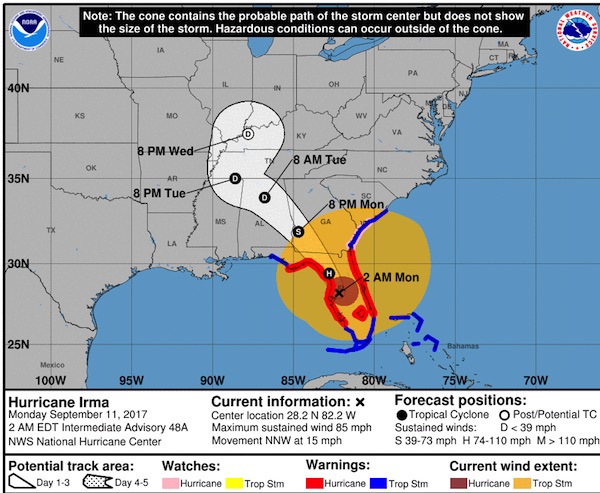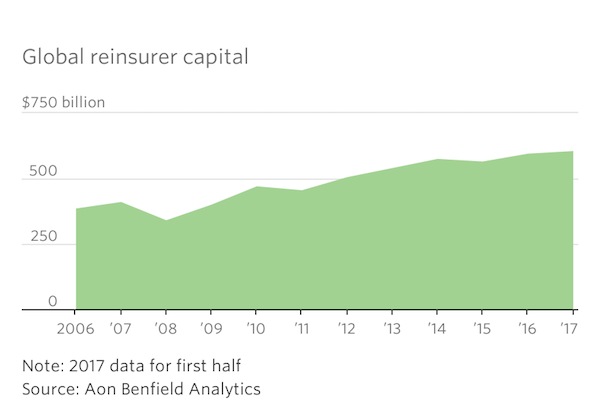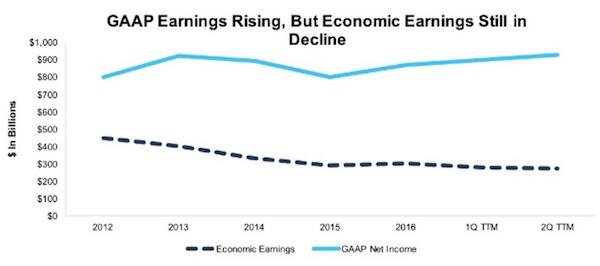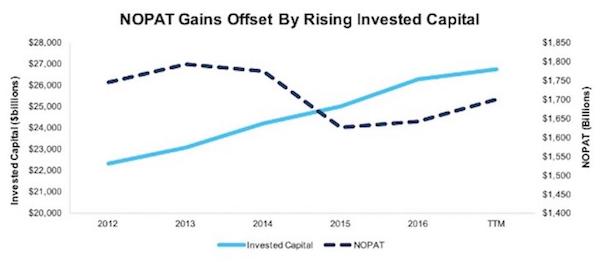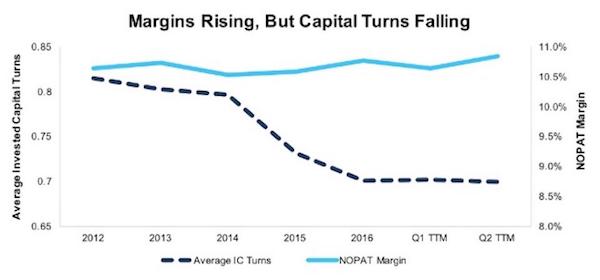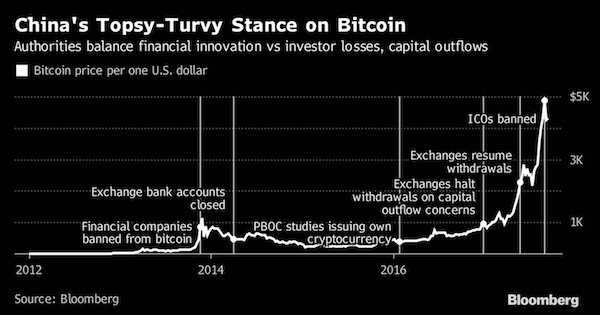
Jack Delano Mrs. Marcella Hart, mother of three, employed as a wiper at the roundhouse. Chicago & North Western R.R. 1943

Next week brings not only the Capitol Hill Bizarro circus, there’s also Davos. So we have BlackRock and Microsoft making their solid pledges. Because they see profit in playing nice.
“..there’s about eighty trillion dollars of money on the planet. If that’s correct, then BlackRock’s holding of seven trillion dollars means that nearly a dime of every dollar rests in its digital files”
• BlackRock Will Start Moving Away from Fossil Fuels (NewYorker)
If you felt the earth tremble a little bit in Manhattan on Tuesday morning, it was likely caused by the sheer heft of vast amounts of money starting to shift. “Seismic” is the only word to describe the recent decision of the asset-management firm BlackRock to acknowledge the urgency of the climate crisis and begin (emphasis on begin) to start redirecting its investments. By one estimate, there’s about eighty trillion dollars of money on the planet. If that’s correct, then BlackRock’s holding of seven trillion dollars means that nearly a dime of every dollar rests in its digital files, mostly in the form of stocks it invests in for pension funds and the like. So when BlackRock’s C.E.O., Larry Fink, devoted his annual letter to investors to explaining that climate change has now put us “on the edge of a fundamental reshaping of finance,” it marked a watershed moment in climate history.
He’s right about the financial future, of course—one can’t look at the clouds of smoke now obscuring the Australian continent and come away thinking that we can maintain our present course. But anyone paying attention—which includes investment-fund C.E.O.s—has known the score for years. What’s changed now are a couple of factors. For one, fossil-fuel stocks have begun to drag down portfolios. As the Times observed, “Had Mr. Fink moved a decade ago to pull BlackRock’s funds out of companies that contribute to climate change, his clients would have been well served. In the past 10 years, through Friday, companies in the S&P 500 energy sector had gained just 2 percent in total. In the same period, the broader S&P 500 nearly tripled.”
But, at least as important, public pressure just keeps mounting. Activist campaigns have been working to make the financial industry start to pay attention. (I’m involved with one, and was among those arrested, on Friday, after a sojourn in the lobby of a Chase branch.) In the past few months, Goldman Sachs, Liberty Mutual, and the Hartford Financial Services Group, Inc., have all put forth new climate policies, and the European Investment Bank—the largest international public bank in the world—announced that it would stop lending to fossil-fuel projects altogether.

CEO Satya Nadella said on the BBC this morning that the world needs much more energy by 2040. Grow the world cleaner! Disregard these lying fools.
• Microsoft Pledges To Eliminate Carbon Footprint By 2050 (Ind.)
Microsoft has promised to remove as much carbon as it has put into the atmosphere by 2050 – a goal critics say is undermined by the tech-giant’s ongoing contracts with some of the largest contributors to greenhouse gas emissions in the world. The pledge – one of the most ambitious to be undertaken by a Fortune 500 company – includes the creation of a “Climate Innovation Fund”, which will invest $1bn (£760m) over the next four years to speed up the development of carbon removal technology. Speaking from Washington, chief executive Satya Nadella said the company would seek to be carbon-negative – taking more carbon out of the atmosphere than it puts in – by 2030. “If the last decade has taught us anything, it’s that technology built without these principles can do more harm than good,” he said.
“We must begin to offset the damaging effects of climate change,” Mr Nadella added, commenting that if global temperatures continue to rise unabated “the results will be devastating”. The move was lauded by politicians with the US – with Democratic senator Chris Coons and Republican Mike Braun, both chairs of the bipartisan Senate Climate Solutions Caucus, describing the mood as “exactly the kind of bold action we need from the business community”. However, it is unclear how the pledge will run alongside Microsoft’s work with giants in the oil industry including Chevron and Exxon Mobil – both of which were identified among the globe’s top companies for greenhouse gas emissions from 1988 to 2015, placing in 12th and 5th respectively according to environmental non-profit CDP.
Last February the firm announced it had the potential to expand Exxonmobil’s production by up to 50,000 barrels of oil a day by 2025 from the Permian Basin in the southwest US – and in 2017 it announced a multi-year deal to sell cloud services to US energy giant Chevron Corp. Bill Weihl, former director of sustainability at Facebook Inc, said Microsoft does not take into account that its work with oil companies could outweigh the gains Microsoft makes on its own carbon reduction. “There is good stuff here,” Mr Weihl said of the carbon capture plan. “But the topline message, that this is urgent, is not matched by what they’re focusing on.”
[..] The announcement follows a December lawsuit in which Microsoft was named alongside the likes of Tesla and Google parent firm Alphabet – with the companies accusing the company of being complicit in the deaths of children from the Democratic Republic of Congo who were mining a metal integral to their devices. The children cited in the landmark lawsuit had been put to work to find cobalt – a precious metal vital to the production of modern batteries that has been intensively mined since the dawn of smartphones.

Unless Biden is called as a witness?!
• With Rivals Stuck In Impeachment Trial, Biden, Buttigieg To Barnstorm Iowa (R.)
Democratic presidential candidates Joe Biden and Pete Buttigieg will blitz Iowa before the state kicks off the party’s nominating contest on Feb. 3, while their key rivals will be largely unable to campaign because they must sit as Senate jurors in Republican President Donald Trump’s impeachment trial. Aides to Biden and Buttigieg, locked in a tight four-way battle with U.S. Senators Bernie Sanders and Elizabeth Warren, would not comment on the unprecedented advantage next week’s Senate trial presents them. Yet newly released schedules reveal an intense on-the-ground push by both candidates in the final stretch in Iowa, while Sanders, Warren and another senator, Amy Klobuchar, will miss most remaining campaign days to participate in the impeachment trial.
“I would rather be in Iowa today,” Sanders told reporters at the U.S. Capitol on Tuesday after the trial formally kicked off. “I would rather be in New Hampshire and in Nevada and so forth. But I swore a constitutional oath as a United States senator to do my job, and I’m here to do my job.” A senior aide to former Vice President Biden, speaking on the condition of anonymity, said the campaign has not recalibrated its Iowa strategy because of the Senate trial. But their No. 1 priority is getting Biden talking to as many voters as possible in Iowa in the final days of what polls suggest is a virtual tie among the four.
Biden heads to Iowa on Friday and will spend nearly every day between then and the Feb. 3 caucuses in the state, the aide said. Biden’s wife, Jill Biden, who has been campaigning heavily on behalf of her husband in Iowa and other early-voting states, will also spend much of the final 18 days in the state. [..] To be sure, Sanders, Warren and Klobuchar are not ceding Iowa. They plan to campaign there during the final three weekends and will rely on representatives traveling the state for them on weekdays when the Senate trial is in session. Warren’s campaign has said they are considering remote appearances and events hosted by key supporters or family members.

Parnas is a natural born liar, as the MSM said until now. But not anymore? Now his words “change the entire impeachment trial”? He’s just a guy who’s been indicted and seeks relief.
• Parnas Now Denies Speaking With Trump (WE)
Indicted businessman Lev Parnas said he did not speak directly with President Trump about a pressure campaign against Ukraine that sought to benefit Trump politically, despite earlier reports to the contrary. Last November, CNN reported that Parnas told close associates he had spoken to Trump. “At one point during the party that night, Parnas and Fruman slipped out of a large reception room packed with hundreds of Trump donors to have a private meeting with the President and Giuliani, according to two acquaintances in whom Parnas confided right after the meeting,” CNN wrote. “Eventually, according to what Parnas told his confidants, the topic turned to Ukraine that night,” the article continued.
“According to those two confidants, Parnas said that ‘the big guy,’ as he sometimes referred to the President in conversation, talked about tasking him and Fruman with what Parnas described as ‘a secret mission’ to pressure the Ukrainian government to investigate Joe Biden and his son Hunter.” The New York Times told a different story Wednesday, reporting: “Mr. Parnas said that although he did not speak with Mr. Trump about the efforts, he met with the president on several occasions and was told by Mr. Giuliani that Mr. Trump was kept in the loop.” Parnas’s decision to go public has led to congressional Democrats demanding that he and other key players in the pressure campaign be called to testify in next week’s Senate impeachment trial.

A success story like none other these days.
• Putin Purged the West from the Kremlin (Luongo)
[..] the next thing to do was to reform an economy rightly criticized for being too heavily dependent on oil and gas revenues. And that is a much tougher task. It meant getting control over the Russian central bank and the financial sector. Putin was given that opportunity during the downturn in oil prices in 2014. Using the crisis as an opportunity Putin began the decoupling of Russia’s economy from the West. During the early boom years of his Presidency oil revenue strengthened both the Russian state coffers and the so-called oligarchs who Putin was actively fighting for control. He warned the CEO’s of Gazprom, Rosneft and Sberbank that they were too heavily exposed to the U.S. dollar this way in the years leading up to the crash in oil prices in 2014-16.
And when the U.S. sanctioned Russia in 2014 over the reunification with Crimea these firms all had to come to Putin for a bailout. Their dollar-denominated debt was swapped out for euro and ruble debt through the Bank of Russia and he instructed the central bank to allow the ruble to fall, to stop defending it. Taking the inflationary hit was dangerous but necessary if Russia was to become a truly independent economic force. Since then it’s been a tug of war with the IMF-trained bureaucracy within the Bank of Russia to set monetary policy in accordance with Russia’s needs not what the international community demanded. That strong Presidency was a huge boon. But, now that the job is mostly done, it can be an albatross.
Putin understands that a Russia flush with too much oil money is a Russia ruled by that money and becomes lazy because of that money. Contrary to popular opinion, Putin doesn’t want to see oil prices back near $100 per barrel. Because Russia’s comparative advantage in oil and gas is so high relative to everyone else on the world stage and to other domestic industries that money retards innovation and investment in new technologies and a broadening of the Russian domestic economy. And this has been Putin’s focus for a while now. Oil and gas are geostrategic assets used to shore up Russia’s position as a regional power, building connections with its new partners while opening up new markets for Russian businesses. But it isn’t the end of the Russian story of the future, rather the beginning.

There’s still not enough salt to take the numbers with. But at least at 6.1%, Xi can claim he meant to do this.
• China’s Economic Growth Hits 29-Year Low (BBC)
China’s economy grew last year at the slowest pace in almost three decades. Official figures show that the world’s second largest economy expanded by 6.1% in 2019 from the year before – the worst figure in 29 years. The country has faced weak domestic demand and the impact of the bitter trade war with the US. The government has been rolling out measures over the past two years in an attempt to boost growth. It comes after almost two years of trade tensions with the US – although hopes of a better relationship with America have seen improvements in manufacturing and business confidence data. This week Washington and Beijing signed a “phase one” trade deal. However, analysts remain unsure whether those recent gains will continue.
In response to the lower growth rate, Beijing is now widely expected to roll out yet more stimulus measures. The government has used a combination of measures aimed at easing the slowdown, including tax cuts and allowing local governments to sell large amounts of bonds to fund their infrastructure programmes. The country’s banks have also been encouraged to lend more, especially to small firms. New loans in the local currency hit a record high of $2.44 trillion (£1.86tn) last year. So far the economy has been slow to pick up, with investment growth falling to record low levels. Historically, China has seen much stronger economic expansion, with the first decade of the 21st Century seeing double-digit percentage growth.
But – although that 6.1% growth rate is China’s weakest expansion in almost three decades – it is much higher than other leading economies. The US central bank, for example, has forecast that the American economy will grow by around 2.2% this year. As part of the phase one deal, China pledged to boost US imports by $200bn above 2017 levels and strengthen intellectual property rules. In exchange, the US agreed to halve some of the new tariffs it has imposed on Chinese products. Speaking in Washington, US President Donald Trump said the pact would be “transformative” for the American economy.

The long term effects of the Fed’s bubbles are disastrous. That’s why they should be taken out of the equation.
• Manhattan’s Homeless Shelters Are Full, Luxury Skyscrapers Are Empty (Atl.)
In Manhattan, the homeless shelters are full, and the luxury skyscrapers are vacant. Such is the tale of two cities within America’s largest metro. Even as 80,000 people sleep in New York City’s shelters or on its streets, Manhattan residents have watched skinny condominium skyscrapers rise across the island. These colossal stalagmites initially transformed not only the city’s skyline but also the real-estate market for new homes. From 2011 to 2019, the average price of a newly listed condo in New York soared from $1.15 million to $3.77 million. But the bust is upon us. Today, nearly half of the Manhattan luxury-condo units that have come onto the market in the past five years are still unsold, according to The New York Times.
What happened? While real estate might seem like the world’s most local industry, these luxury condos weren’t exclusively built for locals. They were also made for foreigners with tens of millions of dollars to spare. Developers bet huge on foreign plutocrats—Russian oligarchs, Chinese moguls, Saudi royalty—looking to buy second (or seventh) homes. But the Chinese economy slowed, while declining oil prices dampened the demand for pieds-à-terre among Russian and Middle Eastern zillionaires. It didn’t help that the Treasury Department cracked down on attempts to launder money through fancy real estate. Despite pressure from nervous lenders, developers have been reluctant to slash prices too suddenly or dramatically, lest the market suddenly clear and they leave millions on the table.
[..] In the past decade, New York City real-estate prices have gone from merely obscene to downright macabre. From 2010 to 2019, the average sale price of homes doubled in many Brooklyn neighborhoods, including Prospect Heights and Williamsburg, according to the Times. Buyers there could consider themselves lucky: In Cobble Hill, the typical sales price tripled to $2.5 million in nine years. This is not normal. And for middle-class families, particularly for the immigrants who give New York City so much of its dynamism, it has made living in Manhattan or gentrified Brooklyn practically impossible. No wonder, then, that the New York City area is losing about 300 residents every day.

Look, if you quote the Washington Post’s Executive Editor to make this point, you’ve already lost.
• The Loss of Truth In the Media Is a Threat to Our Democracy (Ray Dalio)
While I have reflected on the corrosive effects that fake and distorted media are having on our society’s well-being for the past few years, I am now more concerned about it than ever. To me media distortions + great polarity + the upcoming elections = a significant risk to quality democracy. It is no longer controversial to say that media distortions are a serious problem. Even most of the media folks I speak with share my concern. As Martin Baron, the Washington Post’s Executive Editor, said in reflecting on the problem, “If you have a society where people can’t agree on the basic facts, how do you have a functioning democracy?” This is not just a fringe media problem; it is a mainstream media problem. A 2019 Gallup study said that only 13 percent of Americans surveyed have “a great deal” of trust in the media.
Only 41 percent of those surveyed said that they have either a “fair” or “great deal” of trust in media. That compares with 55 percent having such confidence in 1999 and 72 percent in 1976. The dramatically decreased trustworthiness has even plagued icons of journalistic trust such as The Wall Street Journal and The New York Times, as sensationalism and commercialism have superseded accuracy and journalistic integrity as primary objectives. A number of media writers have in private told me that their editors have specifically hired them to write negative, sensationalistic stories because they sell best. They explained that the financial decline of print media and the public’s short attention span have required them to produce such attention-grabbing headlines and stories or face financial decline.

This doesn’t smell right at all.
• Bayer Close To Roundup Settlement – Mediator (R.)
Bayer is close to settling more than 75,000 cancer claims related to its Roundup herbicide, mediator Ken Feinberg told Bloomberg in an interview, saying he was “cautiously optimistic” a deal could be reached in about a month. Feinberg was quoted as saying that the number of cases had grown to between 75,000 and 85,000 and “maybe more”. Bayer in October said it was now facing 42,700 U.S. plaintiffs blaming its glyphosate-based weedkillers for their cancer. Bayer has ruled out withdrawing from the market in the U.S., saying regulators and extensive research have found glyphosate to be safe.
A spokesman for Bayer said: “The number reported by Bloomberg includes potential plaintiffs with unserved cases and is a speculative estimate about the numbers of plaintiffs who might be included in a potential settlement.” He added: “The number of served cases as reported on a quarterly basis remains significantly below 50,000. Bayer does not report or speculate about potential plaintiffs with unserved cases.”

Mass suicide continues. We cannot help ourselves, it’s a force that’s bigger than us.
• Chemicals In Tap Water Cause Thousands Of Cancer Deaths Across Europe (RT)
Each year, more than 6,500 cases of bladder cancer, roughly five percent of all cases in Europe, are found to be attributable to exposure to trihalomethanes (THMs) in drinking water – and it’s all perfectly legal. For a study of countries’ water quality, the EU28 became the EU26, as adequate data for Bulgaria and Romania could not be obtained. Nevertheless, the project covered 75% of the total EU population, and a reading of its findings is ominous.
What the hell are THMs?THMs are a class of molecule that appear as a by-product of the disinfectants used to clean drinking water. When chlorine, the main chemical used to clean drinking water, comes into contact with organic matter, it breaks down into THMs. And despite being legal up to certain levels, long-term exposure to them has been consistently associated with an increased risk of bladder cancer. The EU has set that legal limit at 100 lg=L, but anything over 50 lg=L causes a 51 percent increase in the probability of bladder cancer, in men at least. This study was undertaken at the Barcelona Institute for Global Health, in a city which has THM levels above the present regulatory maximum limit of 100 lg=L. Astonishingly, there is no provision for the lowering of this maximum in the latest European Council directive.
How common is bladder cancer?Bladder cancer is only the tenth most common form of cancer in the UK; 135,000 people in the EU were diagnosed with it in 2016. It is usually quite treatable with a simple surgical procedure as long as it is caught before spreading to other body parts. Some evidence suggests it affects men more than women (although this could be down to lifestyle differences, such as higher rates of smoking).
The countries with the highest percentages of bladder cancer cases attributable to THM exposure were Cyprus (23 percent), Malta (18 percent) and Ireland (17 percent). In other words, 23 out of 100 Cypriot people who are diagnosed with cancer in a given year are likely to have contracted it from their drinking water. Meanwhile, the greatest number of attributable cases actually occurred in Spain (1,482 attributable cases) and the United Kingdom (1,356) although this is a function of population as well as THM contamination.

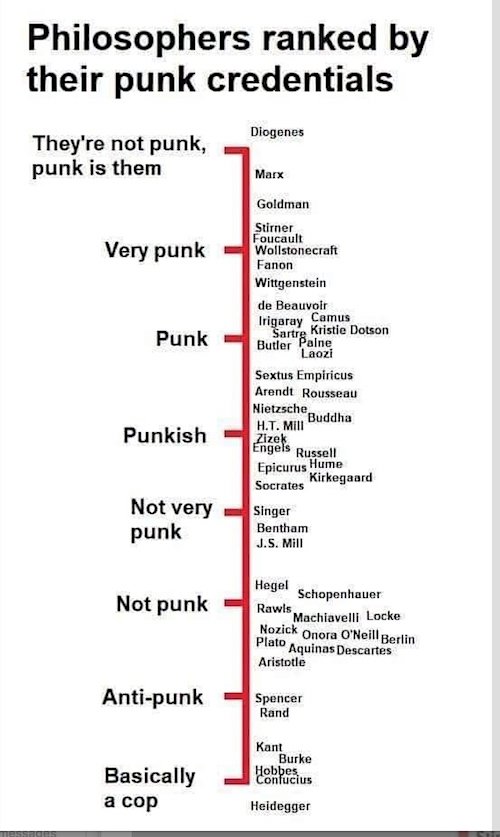

Include the Automatic Earth in your 2020 charity list. Support us on Paypal and Patreon.



